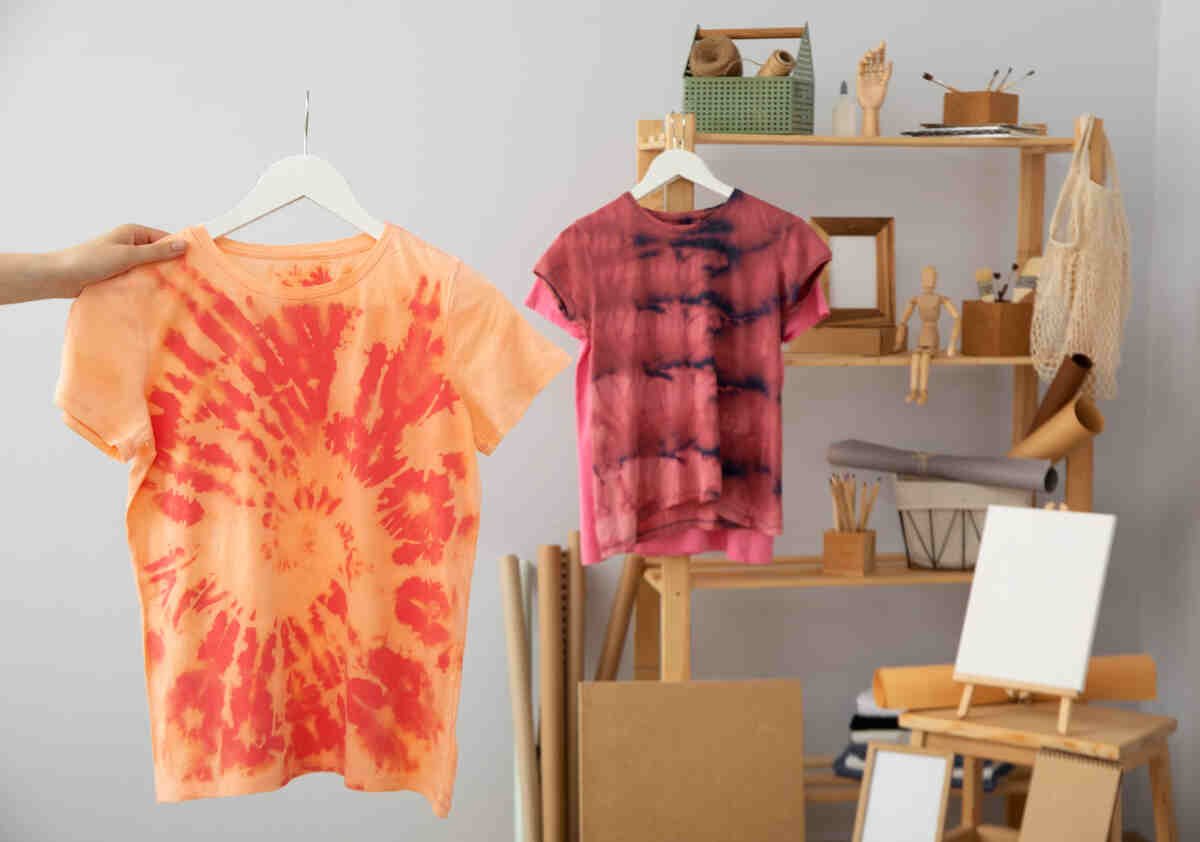
Jewelry enthusiasts and shoppers often encounter the abbreviation “TW” when browsing through exquisite pieces. This seemingly simple combination of letters carries significant weight in the world of jewelry, influencing choices and perceptions. Let’s delve into the origins, implications, and cultural aspects surrounding “TW” in the fascinating realm of jewelry.
1. Introduction
When exploring the intricate details of jewelry, the term “TW” stands out, prompting curiosity about its meaning and relevance. This article aims to demystify the abbreviation, offering insights into its origin, various applications, and the impact it has on the jewelry industry.
2. The Origin
The journey of “TW” traces back to its roots, where jewelers and gemologists began incorporating it to convey essential information about the pieces they crafted. Understanding this origin is crucial to appreciating the significance of “TW” in today’s diverse jewelry market.
3. Types of Jewelry Using “TW”
In the vast landscape of jewelry, the abbreviation “TW” finds its place in various categories, each contributing to the allure of these exquisite pieces. Let’s explore the three primary types of jewelry where “TW” holds significance.
- TW in Diamond Jewelry: Among the most coveted gemstones, diamonds often take center stage in the world of jewelry. The term “TW” is commonly associated with diamond jewelry, emphasizing the carat weight of these precious stones. This designation becomes a crucial factor in determining the overall value and aesthetic appeal of diamond-studded pieces, offering consumers insights into the size and impact of the featured diamonds.
- TW in Gemstone Jewelry: Beyond the brilliance of diamonds, other gemstones also embrace the “TW” designation. Whether it’s the deep blue of sapphires, the rich red of rubies, or the vibrant hues of emeralds, gemstone jewelry with “TW” signifies a measurement of carat weight. This inclusion aids enthusiasts in understanding the size and prominence of the gemstone within the jewelry piece, allowing for a more informed and personalized selection.
- TW in Precious Metal Jewelry: It’s not only gemstones that get the “TW” treatment; precious metals also play a role in this intriguing world. Gold, silver, platinum, and other metals used in jewelry crafting may feature the “TW” designation. In this context, “TW” often refers to the weight of the metal itself, influencing the overall durability and feel of the jewelry. Understanding the carat weight of the metal becomes essential for those seeking specific qualities in their precious metal adornments.
4. Understanding the Significance
Grasping the significance of the “TW” designation is paramount for both seasoned enthusiasts and those embarking on their jewelry journey. This section delves into two crucial aspects that shed light on why “TW” holds such importance in the realm of jewelry.
- Carat Weight and “TW”: At the core of the significance lies the relationship between carat weight and the “TW” label. Carat weight, often abbreviated as “ct,” serves as a measure of a gemstone or diamond’s mass. When integrated into the broader term “TW,” or Total Carat Weight, it encapsulates the combined weight of all stones in a piece of jewelry. This becomes instrumental in determining the visual impact and overall value of the adornment. Understanding the significance of carat weight within the context of “TW” empowers consumers to make informed choices, ensuring their jewelry aligns with both personal preferences and budget considerations.
- How “TW” Affects Jewelry Pricing: Beyond aesthetics, the “TW” label plays a pivotal role in the pricing dynamics of jewelry. Carat weight directly influences the overall cost of a piece, with larger and more substantial stones often commanding higher prices. Unraveling the nuances of how “TW” affects pricing allows buyers to navigate the market intelligently. Whether seeking a delicate piece with subtle elegance or a bold statement adorned with significant carat weight, understanding the correlation between “TW” and pricing ensures that every purchase reflects not just personal style, but also an informed investment.
5. Common Misconceptions
In the world of jewelry adorned with the “TW” label, several common misconceptions often cloud the understanding of consumers. Addressing and dispelling these myths is essential to ensure informed decision-making and a more enjoyable jewelry shopping experience.
- TW vs. CTW: One prevalent misconception revolves around the interchangeable use of “TW” and “CTW” (Carat Total Weight). While both terms relate to the total carat weight of a piece, “TW” typically refers to the cumulative weight of all gemstones in the jewelry, including diamonds and other precious stones. On the other hand, “CTW” specifically denotes the total weight of diamonds in the piece. Clarifying this distinction aids consumers in accurately interpreting the information provided by jewelers and making precise choices based on their preferences.
- Implications of Quality: Another misconception involves associating “TW” solely with the quality of a piece of jewelry. It’s crucial to understand that carat weight, while significant, is just one factor influencing overall quality. The cut, color, and clarity of gemstones, especially diamonds, play equally vital roles. Relying solely on “TW” to gauge quality can lead to oversights. Therefore, a nuanced appreciation of all the factors contributing to a piece’s excellence ensures that consumers make well-informed choices, considering both aesthetic preferences and quality benchmarks.
6. The Impact of “TW” on Jewelry Trends
As trends in the jewelry industry evolve, the impact of the “TW” designation becomes increasingly pronounced, shaping consumer preferences and industry dynamics. This section delves into two facets of this influence, elucidating how “TW” contributes to the ever-changing landscape of jewelry trends.
- Consumer Preferences: The sway of “TW” on jewelry trends is intricately linked with shifting consumer preferences. As individuals seek pieces that blend elegance with value, the emphasis on carat weight becomes a defining factor. Larger stones, denoted by higher “TW,” often align with the contemporary desire for bold and expressive jewelry. Understanding these evolving preferences provides jewelers insights into designing pieces that resonate with the current aesthetic inclinations, offering consumers a diverse array of options that cater to both traditional and modern tastes.
- Fashion: The symbiotic relationship between fashion trends and “TW” jewelry is undeniable. As haute couture sets the stage for style, jewelry designers incorporate the allure of carat weight into their creations. From statement necklaces to cocktail rings, the presence of “TW” often becomes a focal point in fashion-forward pieces. This intersection of high fashion and carat weight not only influences the visual impact of jewelry but also reflects broader societal trends, making “TW” an integral part of the narrative told by each piece.
7. Ensuring Authenticity:
Navigating the world of “TW” jewelry involves more than appreciating its visual appeal; it requires a discerning approach to ensure the authenticity and value of your purchase. This section offers guidance on two vital aspects that empower consumers in making informed and authentic choices when acquiring jewelry.
- Certification Standards: Authenticity begins with certification. When investing in “TW” jewelry, it’s crucial to prioritize pieces that come with recognized certifications. These documents, often provided by gemological laboratories, validate the stated carat weight and quality of the stones. Understanding the significance of certifications, such as those from GIA (Gemological Institute of America) or AGS (American Gem Society), ensures that your “TW” jewelry meets industry-accepted standards. This commitment to transparency not only safeguards your investment but also provides a level of assurance regarding the authenticity and quality of the piece.
- Verifying “TW” Claims: Beyond relying solely on certifications, savvy consumers actively verify “TW” claims before finalizing their purchase. This involves scrutinizing the detailed information provided by the jeweler, including the specifics of each stone’s carat weight. By cross-referencing these details with the certification and seeking clarification from the jeweler, buyers can confirm the accuracy of “TW” claims. This diligence in verification adds an extra layer of confidence, ensuring that the purchased jewelry aligns with the expectations set by the “TW” designation.
8. The Future of “TW” in Jewelry
As technology advances and consumer preferences evolve, the trajectory of “TW” in the jewelry industry is poised for transformative shifts. This section explores two key dimensions that forecast the future role of “TW” in shaping the landscape of jewelry.
- Technological Advancements: The future of “TW” in jewelry is intrinsically tied to technological innovations. With advancements in gemstone imaging, 3D modeling, and precision cutting techniques, jewelers can offer more detailed insights into the carat weight of each stone. This not only enhances the transparency for consumers but also allows for a more personalized and precise selection process. Expect to witness a fusion of technology and tradition, where the “TW” designation becomes more nuanced and tailored to individual preferences, fostering a deeper connection between consumers and their chosen pieces.
- Sustainability in Jewelry: Sustainability is emerging as a defining theme in the future of “TW” jewelry. With an increasing focus on ethical sourcing and environmental consciousness, consumers are seeking assurances that their jewelry aligns with responsible practices. The “TW” designation is expected to intertwine with sustainability standards, with emphasis on traceability and eco-friendly sourcing. This evolution reflects a broader societal shift towards mindful consumption, ensuring that the allure of carat weight harmonizes with ethical considerations, thereby contributing to a more sustainable and responsible jewelry industry.
9. Crafting Your Style with “TW”
In the realm of jewelry, the “TW” designation is not just a measurement; it’s a tool for individuals to craft a style uniquely their own. This section explores two key aspects of how “TW” can be harnessed to personalize and elevate your style within the diverse landscape of jewelry.
- Customization and “TW”: Embracing the allure of “TW” becomes a personalized journey through customization. Whether you prefer delicate pieces with subtle carat weight or bold statements adorned with larger stones, customization allows you to craft a piece that resonates with your style. Jewelers skilled in the art of customization can seamlessly integrate the “TW” designation into designs, ensuring that your chosen jewelry not only reflects your aesthetic preferences but also carries the emotional weight of individualized craftsmanship.
- “TW” in Artisanal Jewelry: Artisanal jewellery enthusiasts find a unique synergy between craftsmanship and carat weight. In this realm, “TW” becomes a canvas for skilled artisans to weave intricate stories. From hand-selected gemstones to carefully calibrated carat weights, artisanal pieces go beyond mass-produced trends. They encapsulate a sense of artistry and uniqueness, allowing individuals to express their style through jewelry that carries the imprint of skilled hands and a meticulous attention to detail.
10. Balancing “TW” with Other Factors
The art of selecting jewelry extends beyond the allure of carat weight, and achieving a harmonious balance between “TW” and other factors is pivotal. This section explores two key dimensions, guiding individuals on how to strike the perfect equilibrium in their quest for exquisite and meaningful pieces.
- Balancing Aesthetics and Carat Weight: The synergy between aesthetics and carat weight is an art form. While a higher “TW” may capture attention, it’s essential to strike a balance that aligns with your personal style and the overall aesthetics of the piece. Consider the interplay of stone size, setting design, and the intended occasion. By thoughtfully balancing aesthetics with carat weight, you can select jewelry that not only dazzles with its brilliance but also resonates with the essence of your unique style.
- Setting Preferences in “TW” Jewelry: Empowering yourself with knowledge about setting preferences is instrumental in achieving the perfect balance. Understanding your preferences regarding stone size, cut, and overall design allows you to make choices that go beyond the numerical value of carat weight. Whether you favor timeless elegance, contemporary flair, or a blend of both, setting preferences guide your selection process, ensuring that the “TW” jewelry you choose aligns seamlessly with your individual taste and lifestyle.
11. Exploring Alternatives to “TW”
In a landscape increasingly shaped by ethical considerations and environmental consciousness, exploring alternatives to tradition offers a pathway to align your choices with values beyond sheer carat weight. This section delves into two key dimensions, presenting alternatives that cater to the discerning consumer seeking responsible and sustainable options.
- Ethical Considerations: For those prioritizing ethical sourcing, exploring alternatives to “TW” often involves choosing gemstones and metals with transparent and ethical supply chains. Opting for conflict-free diamonds, recycled metals, or lab-grown stones are ethical alternatives that resonate with the growing demand for socially responsible jewelry. These choices not only reflect a commitment to ethical practices but also contribute to a more sustainable and conscientious industry.
- Eco-Friendly Options: As environmental awareness takes center stage, eco-friendly alternatives to tradition emerge as a compelling choice. Sustainable materials, such as recycled gold and ethically sourced gemstones, provide eco-conscious consumers with options that minimize the environmental footprint of their jewelry. Embracing these alternatives ensures that your jewelry not only shines with aesthetic brilliance but also embodies a commitment to preserving our planet for future generations.
15. Conclusion What does tw in jewelry mean
In conclusion, the journey through the world of jewelry is a captivating exploration of carat weight, symbolism, and evolving trends. As you navigate the vast array of options, armed with knowledge, you can make informed decisions that resonate with your style and values.







One Comment